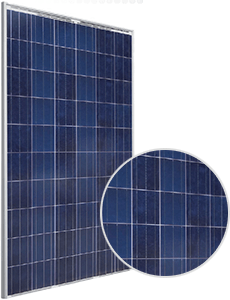Solar energy is produced when sunlight strikes solar panels, which then turn solar power into usable electricity. This photovoltaic transformation is the way solar energy is generated. In this article, we’ll look closely at how a home solar system converts power from the sun.
What is solar energy?
Solar energy, also known as electromagnetic radiation, is light emitted by the sun. The amount of radiation that a particular location gets varies but everywhere on Earth receives some sunlight. Solar panels and other technologies are able to capture this radiation and turn it into useful energy for homes and appliances.
Solar radiation is light – also known as electromagnetic radiation – that is emitted by the sun. While every location on Earth receives some sunlight over a year, the amount of solar radiation that reaches any one spot on the Earth’s surface varies. Solar technologies capture this radiation and turn it into useful forms of energy.
How is solar energy produced? Solar panels convert sunlight to energy

The process of creating power from sunlight starts with the biggest part of a solar installation: the solar panels. A typical solar panel is made from either monocrystalline or polycrystalline silicon housed in a metal panel frame with a glass casing.
When sunlight strikes the thin layer of silicon on the top of a solar panel, it knocks electrons off the silicon atoms. Electrons are negatively charged, which means they are attracted to one side of the silicon cell. This creates an electric current that is captured by the wiring in a solar panel.
Known as the “photovoltaic effect”, flowing electrons that have been knocked free by sunlight are the basis of the electricity generated from solar panels. The more sun that strikes your solar panels, the more electrons will be knocked free, so it is important to consider factors like shade and local cloud cover when designing a solar energy system. In addition to light, heat is also produced by the sun’s rays hitting a panel. This heat is what solar thermal panels use as a power source. They work simply by using the heat produced by the sun to warm a fluid and provide heating and hot water for a home.
Different solar panels produce electricity at different rates depending on their efficiency and quality. High quality solar panels will often cost slightly more money up front, but in the long term will save you money because they produce electricity more efficiently.
Inverters turn energy from solar panels into usable electricity
Once loose electrons have been collected at individual panels, the resulting current is known as direct current, or DC. The electricity we use to power devices, charge electric vehicles, and turn on our lights is alternating current, or AC. Electricity generated by loose silicon electrons is DC electricity and needs to be converted to AC electricity for before we can use it.
This conversion is done by important devices called inverters. Inverters can be configured as string inverters, microinverters, or power optimizers, but each setup performs the same general function of turning DC electricity to AC electricity. Once the electricity passes through inverters and is changed to AC electricity, it flows to your electric panel and meter. Finally, it can be dispersed throughout your home or into the electric grid.
Other solar panel technologies
Most solar panels available are made from crystalline silicon, but there are a few other types of solar panels that produce electricity from the sun.
Cadmium telluride (CdTe) solar panels
CdTe panels use a different material than silicon to produce electricity. While they don’t have very high efficiency ratings (yet), CdTe panels can capture energy at shorter wavelengths than silicon panels. Additionally, manufacturing costs are low.
Copper gallium indium diselenide (CIGS) solar panels
With higher efficiencies than CdTe panels, CIGS panels are a promising panel option. Unfortunately, high production costs have prevented CIGS panels from making it to the mainstream. CIGS panels use a different, copper-based material to generate electricity.
Organic photovoltaic cells (OPV)
Instead of using an inorganic material like silicon or copper, OPV cells use thin layers of organic vapor or solution to generate an electrical current from sunlight. OPV cells have yet to see widespread adoption due to both low efficiencies and short life spans when compared to other panel technologies.
These solar technologies all fall under the umbrella of thin film panels, and are a very small part of the overall solar market. This is mainly because they aren’t cost-effective at this time. In the future these unique options may be the dominant solar technologies, but for now silicon panels dominate the industry.
Make sure you get the best deal for your solar installation
For homeowners thinking about taking advantage of solar energy, it is important to consider all of your options before committing to a solar installation company. By registering your property on the EnergySage Solar Marketplace, qualified installers near you can submit solar quotes for your property that you can compare side by side to determine the best deal for your unique home. By working with a pre-screened solar company on EnergySage, you can ensure you will get a great deal on a solar system so you can start generating electricity from the sun.






